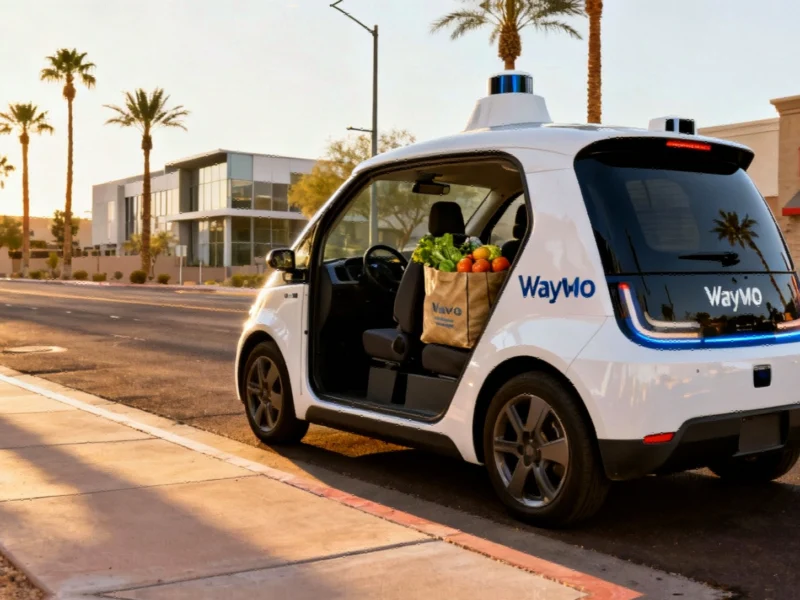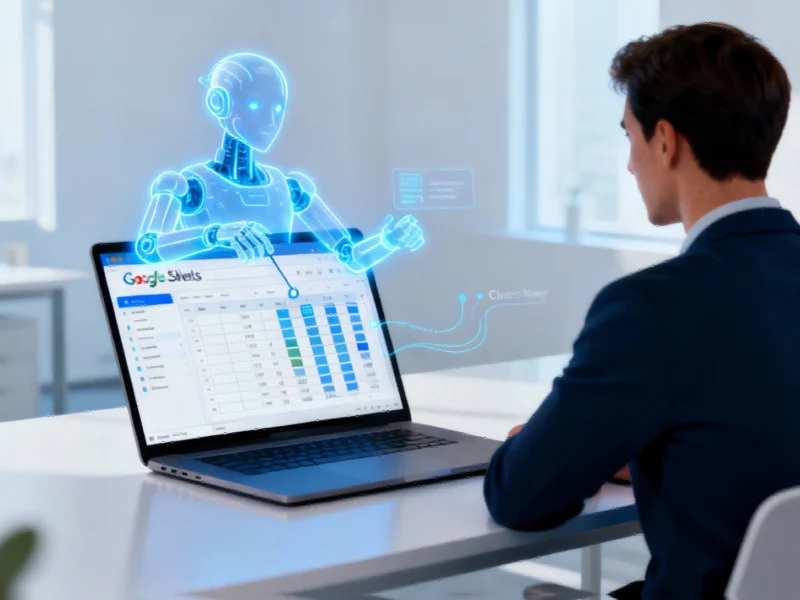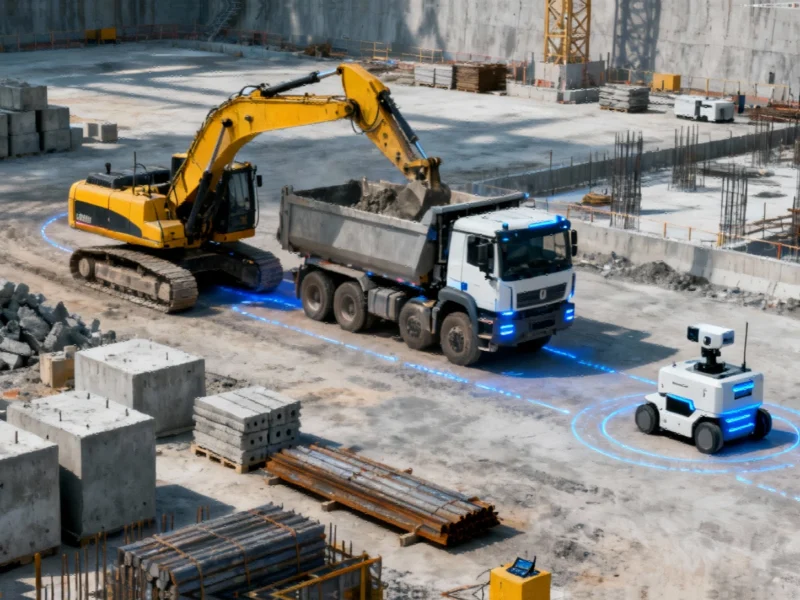Waymo is expanding its autonomous vehicle operations beyond passenger transport with a new multi-year partnership with delivery giant DoorDash, marking the latest evolution in the self-driving technology landscape. The strategic alliance represents Waymo’s renewed focus on delivery applications after previous experiments with UPS and Uber Eats, and comes as the company shifts resources following its decision to wind down the Waymo Via trucking division last year.
The partnership announcement follows growing industry momentum toward autonomous delivery solutions that could transform last-mile logistics. This development comes amid broader technological shifts across multiple sectors, including financial industry challenges requiring advanced monitoring systems and global economic initiatives addressing automation impacts.
Phoenix as the Proving Ground
Phoenix continues to serve as Waymo’s primary testing and commercial market, with this new delivery program covering a substantial 315-square-mile area of the metropolitan region. The companies have designed the service to integrate seamlessly with DoorDash’s existing platform, though initially it will focus exclusively on orders from DashMart—DoorDash’s chain of convenience, grocery, and retail stores.
“This partnership represents a significant step toward our vision for a multi-modal autonomous future of local commerce,” said David Richter, Vice President of Business and Corporate Development at DoorDash. The companies plan to gradually expand the service to include more local Phoenix merchants and a wider variety of offerings as the program matures.
Operational Mechanics and Customer Experience
The delivery process will utilize Waymo’s fleet of driverless Jaguar I-Pace vehicles, which have been extensively tested for passenger service in the Phoenix area. When a customer’s order qualifies for autonomous delivery, the food or groceries will be placed in the trunk of the vehicle, which then navigates autonomously to the delivery address.
The critical innovation—and potential challenge—lies in the final delivery step. Rather than having items handed to them at their door, customers must walk out to the vehicle and retrieve their orders using the DoorDash app to access the trunk. This hands-off approach represents a fundamental shift in delivery dynamics that both companies will closely monitor for customer acceptance and operational efficiency.
Strategic Context and Competitive Landscape
For Waymo, this partnership represents a strategic return to delivery services after focusing primarily on robotaxis following the closure of its trucking division. The company had previously tested delivery concepts with other partners, but this marks its first dedicated, ongoing delivery partnership since those earlier experiments.
DoorDash brings its own autonomous vehicle experience to the collaboration, having previously partnered with sidewalk delivery bot company Serve Robotics in Los Angeles and developed its in-house autonomous delivery bot called Dot, which is currently undergoing testing in the Phoenix area. However, the Waymo partnership will operate independently of DoorDash’s Dot vehicle development.
Industry Implications and Future Prospects
The Waymo-DoorDash alliance signals growing confidence in autonomous delivery technology’s commercial viability. As companies across multiple sectors face infrastructure reliability challenges in transitioning to new technologies, this partnership demonstrates how established autonomous vehicle platforms can be adapted for complementary services.
The success of this Phoenix pilot could determine the speed at which autonomous delivery expands to other markets and whether the convenience of autonomous delivery outweighs the novelty factor for regular users. Both companies are betting that the reliability and consistency of autonomous vehicles will ultimately provide a superior customer experience, even if it requires customers to adapt their behavior during the retrieval process.
The coming months will reveal whether Phoenix residents embrace this new delivery paradigm and whether the partnership can scale beyond its initial limited scope to become a meaningful part of both companies’ service offerings.
Based on reporting by {‘uri’: ‘techcrunch.com’, ‘dataType’: ‘news’, ‘title’: ‘TechCrunch’, ‘description’: ‘Tech news with an emphasis on early stage startups, raw innovation, and truly disruptive technologies. Got a tip? [email protected]’, ‘location’: {‘type’: ‘place’, ‘geoNamesId’: ‘5391959’, ‘label’: {‘eng’: ‘San Francisco’}, ‘population’: 805235, ‘lat’: 37.77493, ‘long’: -122.41942, ‘country’: {‘type’: ‘country’, ‘geoNamesId’: ‘6252001’, ‘label’: {‘eng’: ‘United States’}, ‘population’: 310232863, ‘lat’: 39.76, ‘long’: -98.5, ‘area’: 9629091, ‘continent’: ‘Noth America’}}, ‘locationValidated’: False, ‘ranking’: {‘importanceRank’: 175185, ‘alexaGlobalRank’: 1802, ‘alexaCountryRank’: 764}}. This article aggregates information from publicly available sources. All trademarks and copyrights belong to their respective owners.


